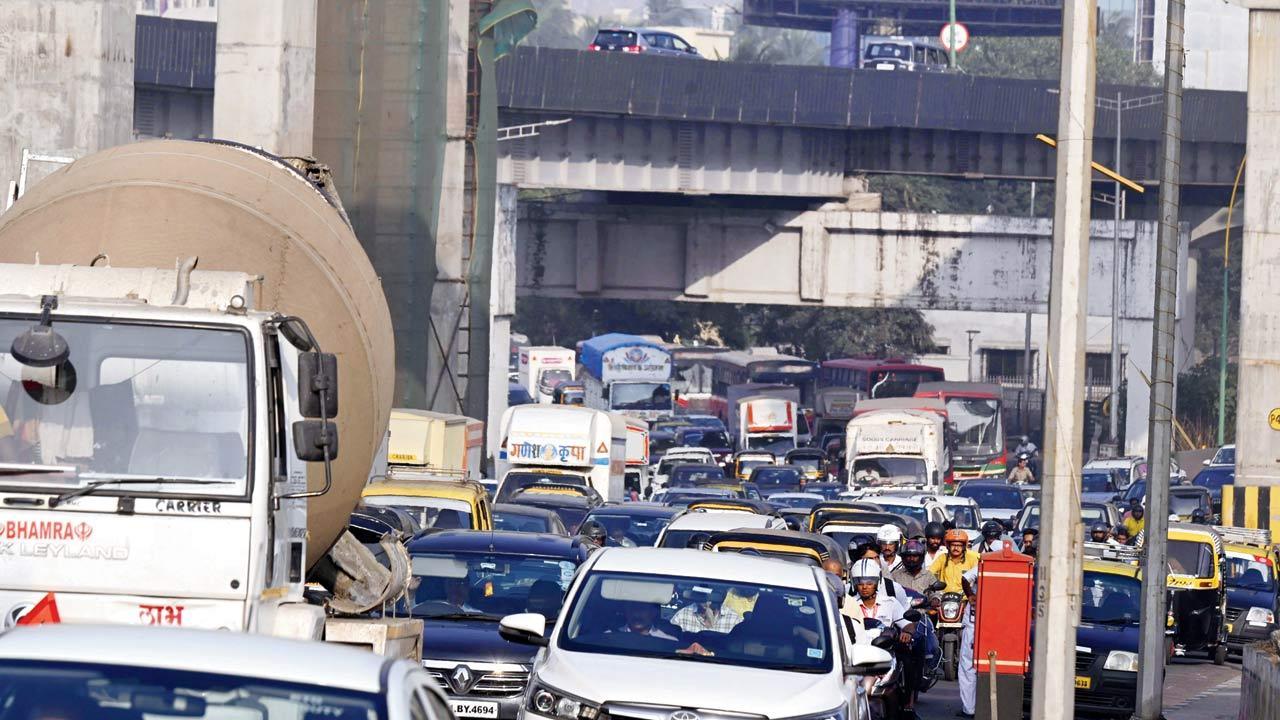It often feels as if good behaviour is meaningless when it comes to navigating our roads, even as we all pay a price

Why does a traffic jam bring out the worst in us? Why do we treat traffic lights with disdain, even though we are aware they exist to make roads safer? Representation Pic/Ashish Raje
 You may have come across the statement often enough, if you happen to spend much time online: ‘India is not for beginners.’ The caption crops up frequently on social media as an introduction to some video aiming to shock or amuse. The shock is presumably felt by people who aren’t familiar with India; the amusement, by those who think it’s funny that non-Indians respect rules and regulations.
You may have come across the statement often enough, if you happen to spend much time online: ‘India is not for beginners.’ The caption crops up frequently on social media as an introduction to some video aiming to shock or amuse. The shock is presumably felt by people who aren’t familiar with India; the amusement, by those who think it’s funny that non-Indians respect rules and regulations.
ADVERTISEMENT
It’s weird how we rarely stop to wonder why things work the way they do in these parts. I have often struggled to understand the reactions of most people when confronted with something tragic. It happens every time an accident occurs, for example, when gawkers start to collect as if by magic to stare at someone’s pain or, worse, livestream the event for likes. What makes us so oblivious to things most sensible people would never be caught doing? Why is it so hard to maintain a modicum of civility the minute we step outside? To blame it on illiteracy is convenient, until one accepts that bad behaviour has little to do with access to education. What these videos reinforce is the notion that anything goes in India, and that the world must accept it because ‘we are like this only.’
Consider what happened a few weeks ago, when footage of a massive traffic jam started to do the rounds on WhatsApp after a truck accident near Naigaon led to chaos on the Bombay-Ahmedabad highway. The accident reportedly took place at 4.30 am but, hours later, its effects continued to be felt as drivers took off in the wrong direction, desperate to get somewhere. It was a tailormade ‘not for beginners’ moment.
I don’t know where that haste comes from, but it’s been on our streets for as long as I can remember. I believe it’s as intrinsic to being Indian as our need for curry leaves. We’re always in a rush for no apparent reason, from the moment we start school until the age when our legs give way and finally force us to sit still. You can see it on the faces of rickshaw and taxi drivers, or by watching people on motorbikes climb onto pavements so they can save a minute in traffic. Everyone wants to move, even if getting somewhere a little earlier will change nothing. We do it even while we’re walking, overtaking as many people as we can just so we can get ahead a few seconds before them. It’s as if we are forbidden from slowing down, even though every guru in the country has long explained how this can improve the quality of our lives.
That video of people stuck in traffic reminded me of a rant put up on Facebook a few years ago, about how 90 per cent of Indians don’t know how to drive. It was a sweeping statement, of course, made by an angry driver who clearly believed he was part of the qualified 10 per cent. And yet, the reasons he put down didn’t seem farfetched. Among them were comments about how most drivers refrain from using blinkers, overtake where they shouldn’t, refuse to slow down near zebra crossings, and don’t understand even basic rules. The person’s solution was to introduce more standards for driving schools, fail more test-takers, and increase the permissible age—all perfectly sensible ideas, which meant they would never be implemented.
When people outside our borders refer to India as ‘not for beginners’ they don’t mean it as a compliment. We should treat those videos as wake-up calls and ask ourselves tough questions about why we behave the way we do. Why does a traffic jam bring out the worst in us? Why do we treat traffic lights with disdain, even though we are aware they exist to make roads safer? And what do we do with the minutes saved by overtaking when we know there’s another jam around the corner?
When videos of our Southeast Asian neighbours tend to circulate online, they are often about great street food, stunning landscapes, unusual art, or something that prompts a viewer to pay those places a visit. It is increasingly rare to find India on those lists these days, and no one seems to notice or care. To see videos about India that go viral is to acknowledge that all the beauty we have to offer pales into insignificance when confronted with the sad boorishness of our people. The sooner we accept this, the faster we may hope for change.
When he isn’t ranting about all things Mumbai, Lindsay Pereira can be almost sweet. He tweets @lindsaypereira
Send your feedback to mailbag@mid-day.com
The views expressed in this column are the individual’s and don’t represent those of the paper
 Subscribe today by clicking the link and stay updated with the latest news!" Click here!
Subscribe today by clicking the link and stay updated with the latest news!" Click here!







